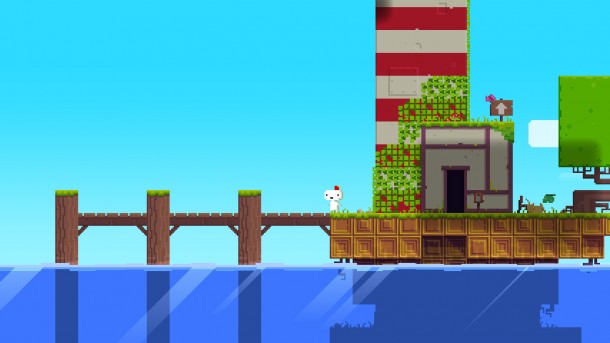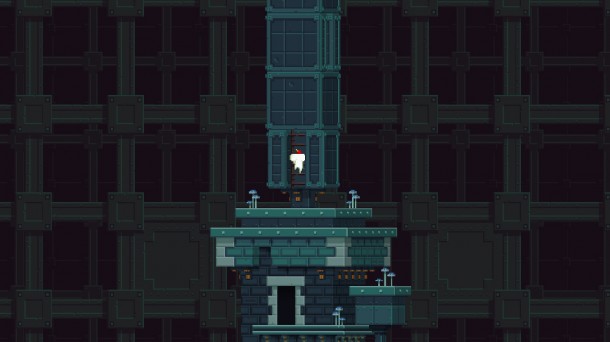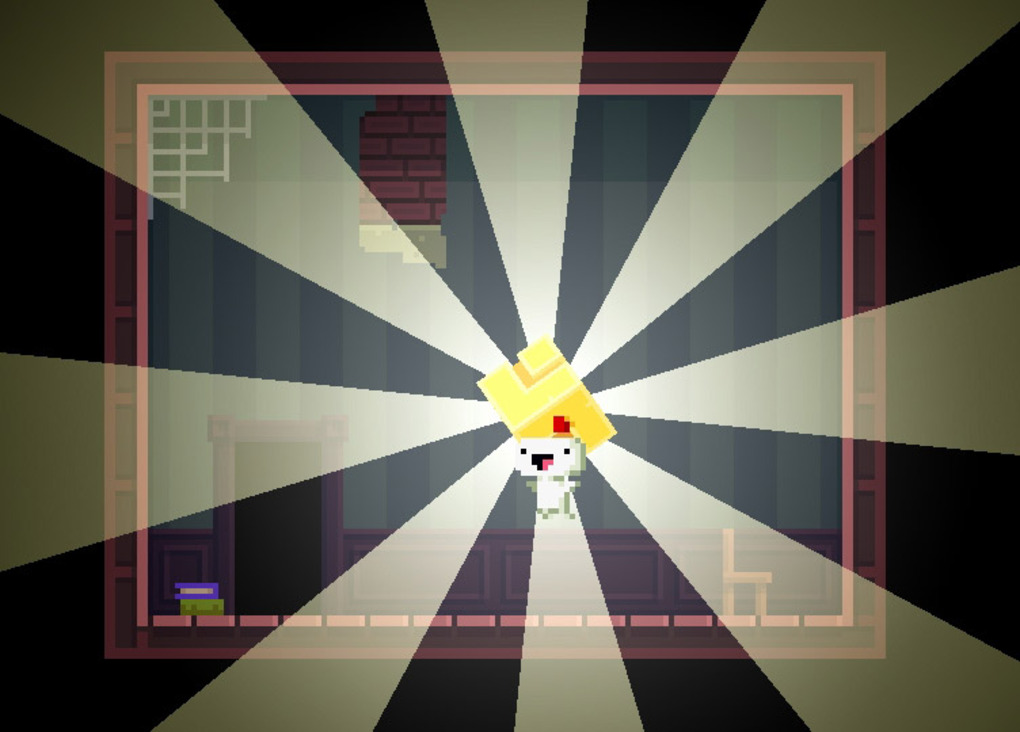 Break Fez down to the core, and it’s an ode to the classic platformers you’d play late into a Saturday night, tucked into your pajamas in front of the television set. You’ll jump; you’ll climb; and you’ll fall. Take a step back, and Fez becomes something else, a menagerie of modern influences anchored to the ideals of an 8-bit era.
Break Fez down to the core, and it’s an ode to the classic platformers you’d play late into a Saturday night, tucked into your pajamas in front of the television set. You’ll jump; you’ll climb; and you’ll fall. Take a step back, and Fez becomes something else, a menagerie of modern influences anchored to the ideals of an 8-bit era.
Its dedication is strong. You won’t find subtle hints at nostalgia, but entire levels meticulously crafted to evoke familiar emotions. It’s all there: exploration of an alien world, open-ended progression, and the building complexity of a core mechanic. Fez doesn’t filter anything out, it’s a near-perfect replication of the past. But it relies on a snapshot of the present, and it trips on what’s left untouched.
Fez begins with a series of classic video game cliches. Gomez, an oddly-proportioned creature with the physical properties of dough, wakes up in a village filled with third-dimensional cynics. He doesn’t chime in, something is clearly special about him. Strange things follow, leaving him with the titular fez hat as a gift from a giant cube-shaped deity. With it, he gains the ability to flip the two-dimensional plane he stands on, revealing an entire world beyond the village.
Fez’s most unique trait doesn’t exist in a vacuum, Super Paper Mario had a similar mechanic. Traversal is as simple as aligning platforms up by flipping the four-sided world around. Frequent twisting reveals hidden pathways, doors, and collectables. Beyond the necessary turning, it becomes a powerful tool to get around more efficiently if you decide to search for the game’s 64 hidden cubes.
 A large, multi-level map, not unlike Castlevania, emphasizes exploration in Fez’s abstract world. Standard, bright locales quickly turn into exotic, mostly abandoned regions filled with cryptic texts and imagery. Completionist beware, you’re guaranteed to be confused as you pass by indecipherable diagrams and exit rooms with secrets still hidden inside, luckily you can return to what you missed with the new game plus option.
A large, multi-level map, not unlike Castlevania, emphasizes exploration in Fez’s abstract world. Standard, bright locales quickly turn into exotic, mostly abandoned regions filled with cryptic texts and imagery. Completionist beware, you’re guaranteed to be confused as you pass by indecipherable diagrams and exit rooms with secrets still hidden inside, luckily you can return to what you missed with the new game plus option.
With time, and a careful eye, much of Fez’s secrets can be understood. In the past, games had a tough time communicating without the sophistication they have today, it’s why some of them felt so incomprehensible. Fez is equally vague, and offers very little help unless you hunt for it. Deciphering the symbols is not for everyone, and those who don’t have the patience will be forced to visit a message board for answers–it’s not exactly intuitive. A few of the best sequences it has to offer are found behind an obscure alphabet and sets of button combinations. Clearly, Fez is making a point, but it’s not always fun to play along.
It’s tough to call Fez out for what it intentionally keeps away from you. There’s a fine line between intelligent puzzles that force you to learn more about the game, and puzzles that leave you refreshing a forum thread. Going into the game blind, you wonder if you don’t have the necessary abilities to obtain the secrets. You’re left trying to decide whether or not to spend time staring at gibberish on the wall or to keep going. On a list of classic gaming memories to reproduce, unintelligible distance from the player shouldn’t be included.
 Fez doesn’t look or sound like the thousands of other games that try to do what it does. It’s a remarkably pretty game. Vibrant purples, eerie greys, and bright greens make each section distinct. The soundtrack is no slouch either. Somehow it sounds both like a homage to the distorted sounds of old, and like a unique, moody mix that becomes synonymous with certain parts of the game. One level in particular blends the visuals with the music in glorious fashion.
Fez doesn’t look or sound like the thousands of other games that try to do what it does. It’s a remarkably pretty game. Vibrant purples, eerie greys, and bright greens make each section distinct. The soundtrack is no slouch either. Somehow it sounds both like a homage to the distorted sounds of old, and like a unique, moody mix that becomes synonymous with certain parts of the game. One level in particular blends the visuals with the music in glorious fashion.
Almost consistently, Fez has frequent frame rate drops as you transfer areas in a level. They’re rarely intrusive on actual gameplay, but it’s breaks the flow of the game. Reports of the game crashing to the dashboard are rampant, especially with older Xbox 360s. I have a slim model, and spent a quite a while with the game only to have it shutdown once. Take that however you’d like.
Fez delivers on what it set out to do. It’s a near perfect rendition of the formulas we grew up on. Combined with the flipping mechanic, it’s a blast to squeeze every ounce of nostalgia from it, and it’s easy to see the care put into each pixel surrounding you. Unfortunately, it doesn’t bother to modernize the constraints of communication. It splits the audience between those who want to enjoy looking back to their childhood, held together with what you’d expect from a game today, and those that have the patience to sift through the cryptic abstractions we left behind years ago.


No Comments